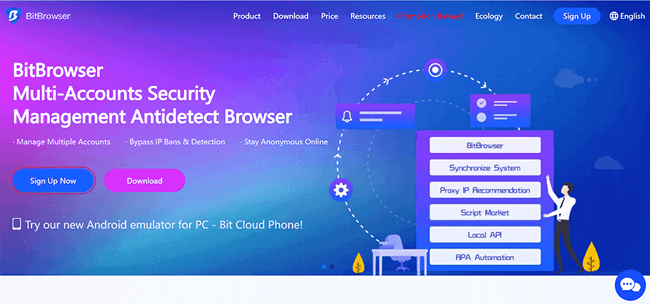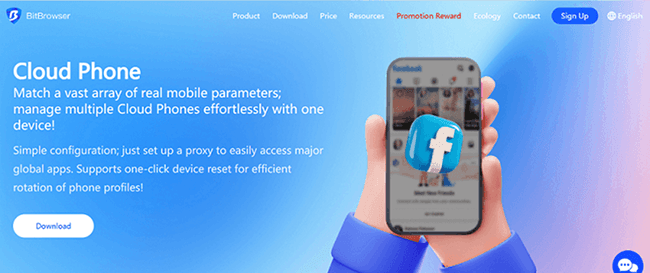


When to Rotate Your Browser Fingerprints: A Timing Guide
 2025.10.27 20:51
2025.10.27 20:51Your browser fingerprint is your digital identity. Platforms track these fingerprints to detect suspicious behavior, and they're particularly sensitive to sudden, dramatic changes. Rotating too frequently looks suspicious. Rotating too rarely leaves you vulnerable. The key is finding the sweet spot that mimics natural user behavior.
The core principle: Real users don't drastically change their device setup overnight. They upgrade gradually, change locations naturally, and maintain consistent patterns. Your rotation strategy should mirror this reality.
The 5 Critical Triggers for Fingerprint Rotation
1. Account Suspension or Warning (Immediate Rotation Required)
When: Within 24-48 hours of any platform warning or suspension.
Why: A warning signals that the platform has flagged something suspicious. Your current fingerprint is now on their radar. Continuing with the same fingerprint increases ban risk exponentially.
Action steps:
- Create a completely new fingerprint with different parameters
- Change your proxy/IP to a different geographic location
- Wait 48-72 hours before intensive activity on the account
- Start with light browsing behavior to rebuild trust
2. Proxy IP Changes (Rotation Recommended)
When: Every time you switch to a new proxy provider or geographic region.
Why: Your fingerprint should match your IP location. A New York IP with Tokyo browser settings raises red flags. Platforms cross-reference these data points constantly.
Best practice: Update timezone, language preferences, and screen resolution to match your new proxy location. This creates a cohesive digital identity that passes platform checks.
3. Long-Term Accounts (Quarterly Rotation)
When: Every 90-120 days for established accounts with consistent activity.
Why: Real users gradually upgrade devices, update browsers, and modify settings over time. A fingerprint that never changes for 6+ months appears artificial and static.
Strategic approach:
- Make subtle changes rather than complete overhauls
- Update one or two parameters at a time
- Spread changes across 2-3 weeks to simulate natural evolution
- Focus on commonly updated elements like browser version and OS updates
4. High-Value Account Launches (Pre-Creation Setup)
When: Before creating accounts worth over $1,000 in potential revenue.
Why: High-value accounts deserve fresh, clean fingerprints with zero history. Reusing fingerprints from banned accounts or sharing fingerprints across premium accounts invites disaster.
Implementation:
- Generate completely new fingerprints for each high-value operation
- Use premium residential proxies matched to fingerprint location
- Age the fingerprint with 7-14 days of organic browsing before account creation
- Document the fingerprint details for future reference and consistency
5. Platform Algorithm Updates (Reactive Rotation)
When: Within 1-2 weeks after major platform security updates.
Why: Facebook, Instagram, Amazon, and other platforms regularly upgrade their detection algorithms. What worked last month might be flagged today. Proactive rotation helps you stay ahead of new detection methods.
How to identify updates:
- Monitor multi-account management communities and forums
- Watch for sudden increases in ban rates across your account portfolio
- Track platform announcements about security improvements
- Test fingerprints on low-value accounts first after suspected updates
The Rotation Frequency Framework
Conservative Approach (Recommended for Beginners)
- New accounts: No changes for first 60 days
- Established accounts: Rotate every 90-120 days
- After warnings: Immediate full rotation
Aggressive Approach (For Experienced Operators)
- New accounts: Minor tweaks after 30 days
- Established accounts: Rotate every 60-90 days
- High-risk operations: Monthly parameter adjustments
Stealth Approach (Maximum Safety)
- New accounts: No changes for first 90 days
- Established accounts: Rotate every 180 days with gradual changes
- Premium accounts: Unique fingerprints maintained indefinitely
What NOT to Rotate Too Often
Certain fingerprint elements should remain stable to maintain account trust:
Keep consistent for 6+ months:
- Canvas fingerprint (unless compromised)
- WebGL renderer details
- Hardware concurrency
- Device memory specifications
Update periodically (90-180 days):
- Browser version (simulate natural updates)
- Operating system version
- Plugin versions
- Screen resolution (only with major "device upgrades")
Can change more frequently (30-60 days):
- Timezone (if you "travel")
- Language preferences (with good reason)
- User agent string (with browser version updates)
The 48-Hour Cooling Period Rule
After rotating a fingerprint, implement a 48-72 hour cooling period:
- Hours 0-24: Light browsing only. Visit the platform, scroll feeds, but avoid critical actions like posting, purchasing, or messaging.
- Hours 24-48: Gradual activity increase. Engage with content, like posts, add items to carts, but hold off on high-value transactions.
- Hours 48-72: Resume normal operations. The platform has now observed your new fingerprint behaving naturally, reducing suspicion.
This cooling period mimics how real users behave after getting a new device or making significant system changes.
Red Flags That Demand Immediate Rotation
Watch for these warning signs that indicate your fingerprint may be compromised:
- Multiple failed login attempts across accounts using the same fingerprint
- Sudden CAPTCHA increases on platforms you normally access smoothly
- Account restrictions appearing across multiple profiles
- Unusual security verification requests
- Shadow banning or reduced visibility on social platforms
Any of these signals requires immediate fingerprint rotation and a thorough review of your account security practices.
Building Your Rotation Schedule
Create a rotation calendar for your account portfolio:
Monthly review: Check all accounts for warning signs and flag any that need attention.
Quarterly rotation: Schedule 25% of your established accounts for fingerprint updates each quarter, spreading the workload.
Annual audit: Once yearly, review your entire fingerprint strategy and update your approach based on the latest platform detection methods.
Document every rotation with dates, old parameters, and new parameters. This audit trail helps you identify patterns if accounts face issues later.
Conclusion
Strategic fingerprint rotation isn't about constant changes—it's about smart timing. Rotate too often and you look suspicious. Rotate too rarely and you become vulnerable. Follow the trigger-based approach outlined here, maintain consistency where it matters, and always allow cooling periods after major changes.
The most successful multi-account operators don't have the most sophisticated fingerprints—they have the best timing. Master when to rotate, and your accounts will stay safer, longer.
 petro
petro
 Multi-Account Management
Multi-Account Management Prevent Account Association
Prevent Account Association Multi-Employee Management
Multi-Employee Management



